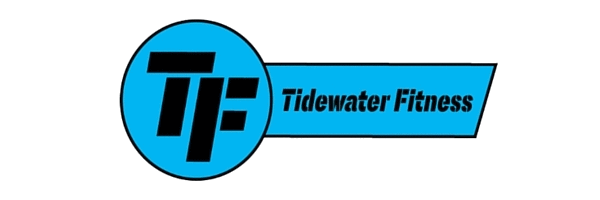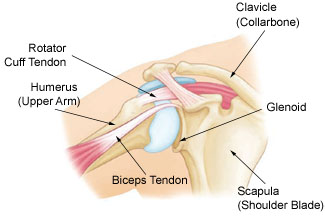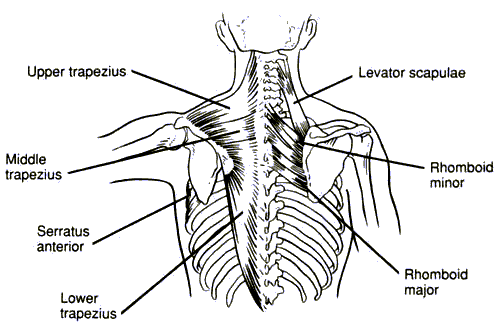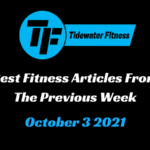I would argue that rowing or pulling is not done enough in most workout programs. There’s usually lots of pressing and biceps curls 🙂 It’s a shame because rowing is very important to posture and shoulder health.
Many jobs now-a-days have you sitting down hunched over at a computer for most of the day. Even if you don’t factor in these types of jobs, the average person sits most of the day. After coming home from work they sit and watch tv, or they may go out to a restaurant where they sit down to eat, or they may attend their child’s sport game where they once again sit down. You get the idea.
Every time we sit, our bodies tend to naturally roll forward. This gives your back that rounded shape. It leaves muscles like the rhomboids, mid traps, and low traps in a long and weak state. While at the same time, the pec minor may be short and tight.
This isn’t a good thing as shoulder problems can easily arise. This is where rowing comes into play. It can help strengthen the muscles that are weak while opening up the chest.
I wrote an entire article on how to improve your shoulder health if stuck in this rounded back posture. You can find it here. So, today I want to dive into the technique side of things.
Most people do not know how to row correctly. With that in mind, I want to show you the three most common rowing mistakes I see and how to do it properly.
1. Elbows come back to far
This is probably the most common of the three. The problem here is that the individual leads with the elbow. What I mean by that is they pull entirely with the elbow.
The problem with this is that it can irritate the anterior side of the shoulder. As the elbow is pulled back farther, the head of the humerus glides forward in the socket. This can put unwanted pressure on the biceps tendon, which can cause pain.
This may not happen immediately, but overtime it can lead to a cranky shoulder.
2. Heads moves forward
This is usually a range of motion issue. The individual pulls back and wants to get that last little bit of motion. In order to do this, they push the head forward, which gives them the feeling of moving the arms back a little farther.
This can put stress on the neck and drive forward head posture. I wrote an article on why this type of posture isn’t good and how it can contribute to head and neck pain. You can find it here.
3. Shoulders shrug
This generally occurs when the individual doesn’t know how to retract or pull their shoulder blades back. They substitute elevation of the shoulders instead. This action uses the upper traps more while the rhomboids aren’t doing much.
Most people have tight or stiff necks and shoulders as it is. Our high stress society contributes to this. By elevating the shoulders, you are feeding into this problem.
***
So now that you know the most common mistakes let’s talk about how to do it correctly.
The movement should begin with the shoulder moving backward, then the elbow follows. You want to feel as if you are pushing your chest forward. This allows you to retract (pull back) the shoulder blades.
Stop once the elbow is inline with the shoulder. The elbow should also be about 30-45 degrees or so from the body. Remember to avoid shrugging the shoulders and moving the head forward.
And that’s it! This technique applies across the board for any type of horizontal rowing exercise.
Pulling should be done more often. For the majority of people, it should be done twice as much as pressing. So for every pressing exercise, you should have at least two pulling movements in your program. This creates a good balance for shoulder health and proper function.
Rowing is important, but technique is crucial. Use this article as a guide, and your shoulders will thank you later!
Photo Credit:
1. http://orthoinfo.aaos.org/topic.cfm?topic=a00026
2. http://manbicep.com/2013/08/13/neck-and-upper-back-pain-fixes/











